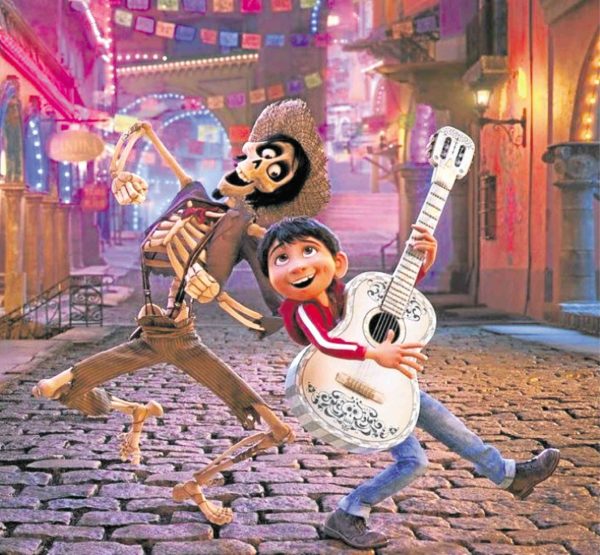
“Coco” is about Miguel (right) who visits a colorful afterlife.
Veteran Pixar animator Gini Santos previously worked on high-profile and successful film projects like “Finding Nemo,” “The Incredibles,” “A Bug’s Life” and “Up,” to name a few. The San Francisco-based artist is currently in town to promote Disney-Pixar’s latest project, “Coco,” which begins its theatrical run in local cinemas starting Nov. 22.
“This is a film we’ve been working on for a long time,” Santos told the Inquirer earlier this week. “Coco” tells the story of Miguel, a Mexican boy who discovers a colorful afterlife during the celebration of Dia de Muertos, or Day of the Dead. He pursues his dream of becoming a musician, against his family’s wishes.
The animator, one of the “Pixnoys” or Filipinos working at Pixar, lived in Guam when she was younger, but moved to the Philippines to study, first in St. Scholastica and, later, at the University of Santo Tomas. She eventually finished Computer Art at the School of Visual Arts in New York.
She was an art director in an advertising agency prior to getting hired by Pixar in 1996.
“Animation was the farthest thing from my mind,” she told us in 2004, describing how she felt about the “repetitiveness” of an animation subject, back in UST.
But, Santos has grown into her role and is grateful for her 21-year affiliation with the revered animation studio.
Excerpts from the Inquirer interview:
How has the journey been, from working on those films in the ’90s to your current project? It’s been amazing. Every film has been a unique experience, and I feel like I’ve grown as an animator. Even Pixar—it has grown … and animation has changed. It’s gotten better, and it’s been cool to see that.
Please explain your involvement in the design process of “Coco.” Usually, what happens at the early stage of the film is that our art department starts character and set design. We’re a part of that, along with the director, who makes approvals.
People like me would come in and have a say in the design, or make alterations when they take a 2D (flat) drawing, then we try to build it on the computer. Sometimes, part of it doesn’t transfer. Animators make a call on adjusting the design, so it would work [in] the 3D world.
Gini Santos —OLIVER PULUMBARIT
You mentioned at the photo-op that Miguel was “inspired” by you. Can you elaborate? Oh, yeah! Just a little tidbit—one of the animators was tasked with building and rigging the model controls for Miguel. He posed the model in a way where it had glasses. He said, “You look like Miguel!” Because I have the dimple on the same side as him. So, it’s been a joke, supposedly I’m Miguel, because [they quote from the movie], “Dimple (points to left cheek), no dimple (points to right)!”
How important is it that “Coco,” inspired by Mexican culture, is released now? It’s important now because it’s proof that there’s more in terms of telling stories [about] different cultures. It’s a testament to Pixar’s courage to let us be storytellers.
[But] yeah, we never meant for the film to make a statement about anything that’s happening now—but, if it can reinforce the idea of diversity, that would be great!
Visually, what can you say about possible comparisons with “The Book of Life”? A lot of the designs in our film are based on our own concepts. But, I’m sure there was some inspiration from Mexico, as far as images from Dia de Muertos [are concerned].
What advice can you give aspiring animators in the Philippines? When I first started working as an animator at Pixar, the computer was totally new. There was nothing on the web—it wasn’t even a web then! Now, there’s so much information [on] the principles of animation.
Work on your ability to address those principles. Tell a story clearly. Always keep it simple. You become better as an animator the more you keep doing animation. Do either short stories or little vignettes where it’s clear what’s happening. We’re always going to look at the animation. It doesn’t have to be super-polished. We look at the performer—and [how he or she works with a team].